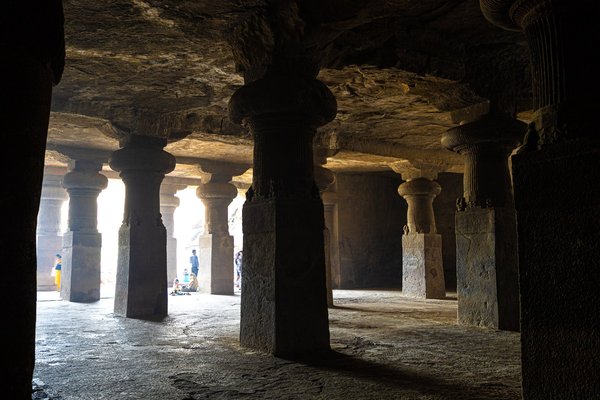India
Elephanta Caves
The Elephanta Caves hold great examples of Indian rock-cut art and architecture.
The reliefs and sculptures in the caves have been dated between the 5th and 8th centuries. The Hindu caves are dedicated to the god Shiva. These were regular Hindu places of worship, and during the festival of Shiva continue to be so. The caves are hewn from solid basalt rock. All caves were painted in the past, but only traces remain.
Community Perspective: As it is easily accessible from Mumbai city centre on a 1hr boat ride from the Gateway of India, it’s a nice escape from the city. Cave 1 is the really impressive one. Ignore the scam guides. Frederik’s review is a good place to start as he shares his visiting experience and knowledge of Hinduism.
Site Info
Official Information
- Full Name
- Elephanta Caves (ID: 244)
- Country
- India
- Status
-
Inscribed 1987
Site history
History of Elephanta Caves
- 1987: Inscribed
- Inscribed
- Type
- Cultural
- Criteria
- i
- iii
Links
- UNESCO
- whc.unesco.org
- Official
-
- asi.nic.in — Archaeological Survey of India
- Related
-
- elephanta.co.in — Everything about Elephanta: travel info
All Links
UNESCO.org
- whc.unesco.org — whc.unesco.org/
Official Website
- asi.nic.in — Archaeological Survey of India
Related Resources
- elephanta.co.in — Everything about Elephanta: travel info
News Article
- Dec. 19, 2024 bbc.com — Thirteen dead after naval speedboat hits Elephanta ferry off Mumbai
- Aug. 19, 2024 timesofindia.indiatimes.com — Elephanta Caves, World Heritage site, adopted by private firm
- Jan. 6, 2020 thehindu.com — The ancient carvings at Elephanta Caves are fading, and no one cares
- Feb. 26, 2018 financialexpress.com — How electricity reached Elephanta Caves 70 years after Independence
- March 29, 2017 indianexpress.com — Elephanta Caves to get a facelift
- March 3, 2015 firstpost.com — Elephanta Caves could get helipad
- Feb. 25, 2007 cities.expressindia.com — Although the tourism department is trying to develop Elephanta island in a way appropriate for a world heritage site, rehabilitation of the shopkeepers is proving to be a major roadblock.Conservationists and tourism officials agree that Elephanta will not regain its historical pristine look without the removal of these shops. There are about 25 shops, all unauthorised, along the stairway leading from the jetty to the caves.
Community Information
- Community Category
- Archaeological site: South (East) Asian
Travel Information
Needs a Ferry
Recent Connections
-
Mentioned in Moby Dick
"Now, by all odds, the most ancient ext… -
Needs a Ferry
Ferry from the Gateway of India (1h) -
Foreigner prices
Citizens of India and visitors of SAARC…
Connections of Elephanta Caves
- Individual People
- Geography
-
-
Indian Ocean
It lies in the Mumbai Harbour, which opens to the Arabian Sea to the south. The Arabian Sea is in the northern Indian Ocean (wiki) -
Offshore of a major city
Situated in Mumbai Harbour 10 Kms from Mumbai. Ferry from Gate of India
-
- History
-
-
Thomas Cook Round the World tour 1872-1873
c Feb 1873 "We arrived at Bombay nearly a week before our departure for Egypt, and had ample time for the inspection of this rapidly increasing city. A trip to the Island of Elephanta, where there are strange rock hewn temples, occupied one of the days allotted to Bombay. -
Golden Age of India
-
- Architecture
-
-
Made out of basaltic material
"The caves are hewn from solid basalt rock" (wiki) -
Rock Cut Architecture
"The caves are the most magnificent achievement in the history of rock-architecture in western India." (OUV)
-
- World Heritage Process
-
-
Perfect Inscriptions
1987
-
- Religion and Belief
-
-
Shiva cult
"Criteria (i): The fifteen large reliefs surrounding the lingam chapel in the main Elephanta Cave not only constitute one of the greatest examples of Indian art but also one of the most important collections for the cult of Shiva." (OUV) -
Stupa
Includes Stupa Hill, named because of a small brick Buddhist monument at the top
-
- Human Activity
-
-
Festivals
Two-day Elephanta Festival of classical dance and heritage art forms -
Historical Graffiti
Across the breast of the Shiva as Mahayogi (Cave 1) is written W. Kidson 1802See www.flickr.com
-
- Constructions
-
-
Unfinished constructions
one of the caves at the Stupa Hill
-
- Timeline
-
-
Built in the 6th century
The age of the caves is debated. The Archaeological Survey of India states "There are seven cave excavations in the Elephanta group and these are datable from circa 6th - 7th centuries A.D." . Wiki places them at "between the 5th and 8th centuries".
-
- Visiting conditions
-
-
Needs a Ferry
Ferry from the Gateway of India (1h) -
Foreigner prices
Citizens of India and visitors of SAARC (Bangladesh, Nepal, Bhutan, Sri Lanka, Pakistan, Maldives and Afghanistan) and BIMSTEC Countries (Bangladesh, Nepal, Bhutan, Sri Lanka, Thailand and Myanmar) - Rs.30 per head. Others: Rs. 500/- per headSee asi.nic.in
-
- Literature & Film
-
-
Mentioned in Moby Dick
"Now, by all odds, the most ancient extant portrait anyways purporting to be the whale’s, is to be found in the famous cavern-pagoda of Elephanta, in India." (p. 205)
-
News
- bbc.com 12/19/2024
- Thirteen dead after naval speedboa…
- timesofindia.indiatimes.com 08/19/2024
- Elephanta Caves, World Heritage si…
- thehindu.com 01/06/2020
- The ancient carvings at Elephanta …
Recent Visitors
Visitors of Elephanta Caves
- Alberto Rodriguez Gutierrez
- Alexander Lehmann
- A. Mehmet Haksever
- andyng-site
- Angela Vandyck
- Aspasia
- Atila Ege
- Bamse
- Bernard Joseph Esposo Guerrero
- Bill Maurmann
- BMuramatsu
- Brendan Carroll
- campmany
- Carlo Sarion
- Chalamphol Therakul
- Cheryl
- Chinmaya
- Christer Sundberg
- Christoph
- Clyde
- Cyberczar
- czesioszpachelka
- Danny L
- David Marton
- Dimitar Krastev
- Elisabeth Fransisca Situmorang
- Els Slots
- Erik Jelinek
- Fan Yibo
- fedemarch92
- Felicité
- Frederik Dawson
- Garrett
- GerhardM
- Gernot
- Hadrianus
- Iain Jackson
- Ian Cade
- Ivan Rucek
- Jana and Matt
- Janos
- Jeanne OGrady
- Jeffrey Chai
- Joel on the Road
- jxrocky
- Karito Vies
- KateY
- kiank37
- Knut
- Kurt Lauer
- Lado Joel
- Lara Adler
- Laurine
- leroykstlj
- lichia
- Loic Pedras
- Lucio
- Ludvan
- Luis Filipe Gaspar
- Lukasz Palczewski
- Luke LOU
- Maciej Gil
- Mahuhe
- Malgorzata Kopczynska
- marcel staron
- MarcoB_0
- Martina Rúčková
- Matthewsharris
- MaYumin
- Michael Ayers
- Michael Novins
- Mikko
- Milan Jirasek
- Miloš Tašković
- Mkandasa
- MMM
- Monica Tasciotti
- Morodhi
- Nick Kuzmyak
- Nihal Ege
- Patrik
- Petteri
- Philipp Leu
- Philipp Peterer
- Pradip Tripathy
- Priyaranjan Mohapatra
- Randi Thomsen
- Reza
- Riccardo Quaranta
- Roman Bruehwiler
- S. Anril Tiatco
- Sergio Arjona
- Shandos Cleaver
- Solivagant
- Sorel Americo
- Stanislaw Warwas
- Svein Elias
- Szucs Tamas
- Tamara Ratz
- Taotao Chen
- Tarquinio_Superbo
- Tevity
- Thomas Buechler
- Thomas van der Walt
- Thorben
- Tim Allen
- TimPick
- Truls Brekke
- Vincent Cheung
- Waxwing
- Westwards
- Wojciech Fedoruk
- Wo_ko
- Xiquinho Silva
- Yi Han Goh
- Zoë Sheng
- Zos M
Community Reviews
Show full reviews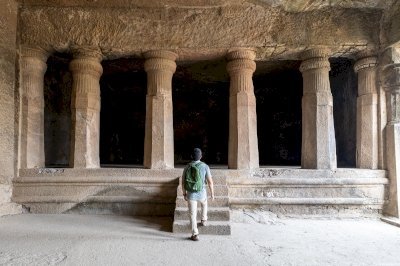
The previous reviews pretty much described what to expect from a visit to the Elephanta Caves, a collection of rock-cut cave temples dedicated to Shiva. Here are some observations and updated info from my visit to the island in January 2024.
1. Logistics - getting to the caves remains the same: you get on a ferry from the Gate of India, sail for about an hour, catch the toy train upon arrival, walk uphill and dodge eager vendors, and pay the entrance tickets. Unless I missed it, there didn't seem to be an option for "luxury" ferry anymore, as everyone got one type of ticket at INR 260 return, with an option to pay extra INR 10 for a seat on the upper deck. I took the toy train (INR 18) and paid INR 5 for the local tax (or 'village' entry fee). I also decided not to buy a guide booklet being sold for INR 180 as I've had internet connection and knew that there would be info panels at the caves. As usual, foreign tourists had to pay a significantly higher fee (INR 600) than the locals, but we all get used to it, I guess. By the way, heaps of garbage on the shores of the island, and it really ruins the experience for me.
2. Cave 1 - as mentioned in previous reviews, cave 1 is the highlight and tells what this site is all about. Some comments on the things you'd see in …
Keep reading 0 comments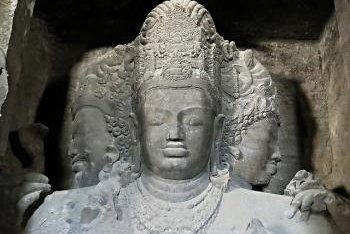
I visited this WHS in November 2016. I had an early morning flight from Goa to Mumbai and so I opted to beat the rush hour morning traffic and head straight to the Gateway of India and the Taj Palace & Tower.
I bought my tickets for the "luxury" ferry to Elephanta Island which is less crowded and in a slightly better state than the "normal" ferry. I also opted to pay the extra 10 rupees to stay on the upper deck which is even less crowded and great for taking photos of the Gateway of India.
After around one hour in the Arabian Sea, I set foot on Elephanta Island and decided to walk along the jetty instead of waiting for the tourist train to depart. After a number of stalls, 5 rupees are collected as local tax and then you have to walk uphill for a while before getting to the Elephanta Caves entrance.
There are 5 Hindu caves in total even though the main cave has the most important sculptures. Having visited Ellora, Ajanta and Badami Caves, I failed to appreciate any OUV in this WHS and apart from the 6 metre Trimurti of Elephanta (picture) showing the three faces of Shiva all the other sculptures are damaged and only worth viewing as a national heritage or pleasant sidetrip from Mumbai.
However, I don't think I'll ever forget the Elephanta Caves as after my visit I found out that the 1000 and 500 rupee notes had been …
Keep reading 0 comments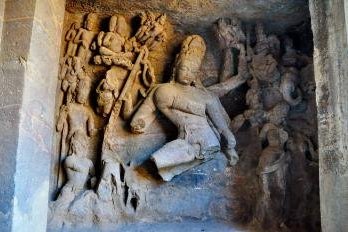
After lunchtime from the Gateway of India, a symbolic entrance to subcontinent during the British Empire in Mumbai, I took a boat ride to see the Elephanta Caves on the island of the same name just outside the metropolis. The trip took exactly one hour to reach the island passed many navy bases, cargo ports, petroleum jetties and a nuclear power plant, if not because of UNESCO protection, I believe Elephanta Island will be a part of Mumbai electrical grid production.
On the island I had been approached by the typical guide scam who always claimed that you need a proper guide to enter the caves, just ignored them. I rode the mini train from port to the island. From the train parking, I had to pay a small landing fee, and then I walked thru many souvenir shops and restaurants, these shops made the island like a market place and seemed to me that many tourists loved shopping even before seeing the caves. Since the caves were located on the hill in the middle of island, the way to the caves required some hiking. Again along the hiking route in the forest were full with souvenir shops and warning signs for monkey attack. On the hill there was another ticket counter but this time for the caves. I immediately followed people to see the cave no.1 which I believed the sole highlight of Elephanta. The cave was quite impressive than my original though. The cave was adorned with many …
Keep reading 0 comments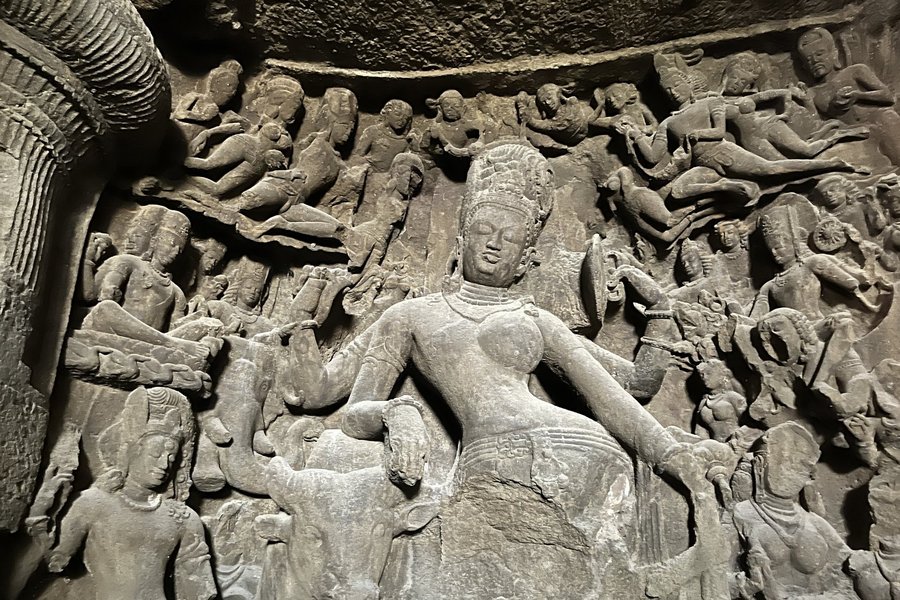
The Elephanta caves are a wonderful link to our past. We caught a boat from Belapur to the caves. A toy train is available to take us close to the caves. Unfortunately most of the tall statues were destroyed and only a few are still standing. However the famous caves are still worth a visit. There were lots of monkeys too.
Keep reading 0 comments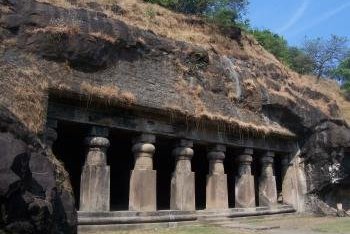
First things first; the enormous carvings in the first cave really are impressive, and rank alongside the very best at Ellora/ Ajanta. However I have to say this was perhaps my biggest disappointment on my little South Asian jaunt. Aside from the impressive first cave there is really nothing else of note. The other five or six caves at the site are all devoid of decoration and some look little more than natural caves, apparently the soft stone made it difficult to carve lasting art works.
Cave 1 really is impressive and even on its own justifies the inscription on the World heritage list. I was hugely impressed by the Trimurti, a massive depiction of Shiva with three heads. The size of the other sculptures really was remarkable as well. But that was about it. I walked off in anticipation of seeing more sculptures but saw nothing but empty caves. After about 15 minutes I turned back and spent some more time in the main cave, then headed home.
This was the only site where I had trouble getting the free entry that was granted by it being Indian World Heritage week, but the attendants did eventually relent for me, but carried on charging everyone else despite the large signs saying otherwise.
The caves are on an island in Mumbai harbour and it was a nice trip out there, it take about an hour each way and boats leave from the Gateway of India. This meant I got to pay …
Keep reading 0 comments
Elephanta caves was a pleasant excursion near Bombay. There were monkeys and a Shiva Lingam
Keep reading 0 comments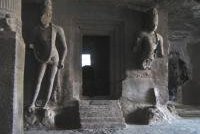
If you have overloaded your senses and need to get out of Mumbai for a day, a slow cruise to the Elephanta Island and the Elephanta Caves is exactly what you need.
Some 9 km north of the Gate of India, in the Sea of Oman, the Elephanta Island and its caves are the premier tourist attraction of Mumbai. The 50-minute cruise takes you from one world to another. Suddenly the air is fresh and the sound of the bustling city is far away.
Little is known about the origin of the Elephanta Caves but they are thought to have been created between 450 and 750 AD when the island was known as Gharapuri (Place of Caves). The Portuguese renamed the island Elephanta because of a large stone elephant near the shore. The statue collapsed in 1814 and the British then moved it to the mainland.
The Elephanta Caves consist of one main cave and several smaller. In the main there is a number of large sculpted panels, all relating to Shiva. Some of the rock surfaces are finely finished whereas some are unfinished bare rock. In the main cave there is an enormous central bust of Shiva with its eyes closed in eternal contemplation.
Elephanta is certainly worth a visit but foremost its a nice escape from Mumbai for half a day. Compared to the Ajanta and Ellora caves, that I later visited they tend to fall down slightly in rank.
Keep reading 0 comments
